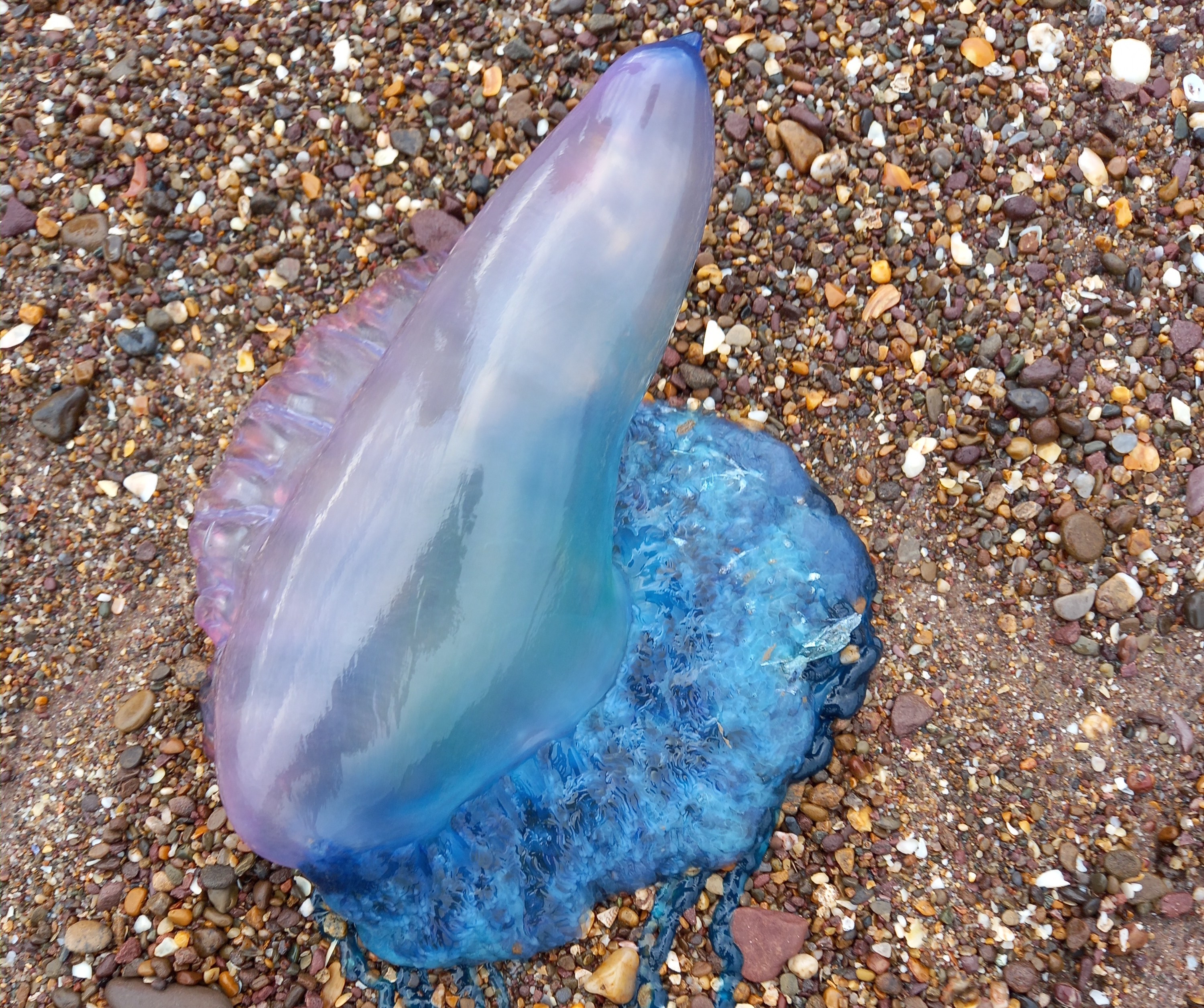From Cornwall to the Hebrides, sightings of giant jellyfish have surged around Britain this year.
Rhizostoma pulmo — also known as the barrel jellyfish, the dustbin-lid jellyfish or the frilly-mouthed jellyfish — can grow to nearly a metre across and weigh 35kg, about as much as a large labrador.
Resembling a ghostly, translucent toadstool, it pulses serenely through the water, carried by the currents. Sightings around the UK and Ireland have increased by 230 per cent, according to the Marine Conservation Society.

Despite their imposing bulk, barrel jellyfish are relatively benign. They trail eight frilly “oral arms”, which contain their small stinging tentacles and hundreds of little tiny mouth-like pores, which absorb the plankton and tiny crustaceans that they eat. Their sting is typically too weak to do serious harm to humans, though those who find one washed up on a beach are advised to keep their distance. Even a dead jellyfish can sting.
The Portuguese man o’ war, by contrast, is no gentle giant. Dazzlingly blue and topped with a gas-filled sail, it is in fact a colony of organisms — a siphonophore — rather than a true jellyfish.
Its tentacles, which can stretch several metres, deliver a painful sting. Britons have seen less of it this year: sightings have dropped by more than 80 per cent compared with the previous 12 months, possibly because Atlantic storms have blown fewer our way.

A Portuguese man o’ war off the coast of the UK
ETHAN FAHEY/MARINE CONSERVATION SOCIETY
The annual Wildlife Sightings Report, which relies on the public reporting sightings of different species to the Marine Conservation Society, also highlighted notable increases in large jellyfish blooms. About a fifth of moon jellyfish sightings involved groups of a hundred or more, the highest proportion since 2016.
Shifts in jellyfish populations are part of a broader ecological story. The average surface temperature of British seas has risen by about one degree celsius since the 1980s, with recent summers among the warmest on record. Changing currents and milder waters are drawing species northward: triggerfish and short-snouted seahorses are now appearing more often along the English Channel.
Octopus sightings have climbed sharply, with common octopus reported off Cornwall and Devon in numbers not seen for decades, and smaller species such as the curled octopus turning up more frequently along the Welsh coast.
Meanwhile, leatherback turtles — which migrate to feast on jellyfish — have been sighted off the south-west coast and even in the Hebrides. This year, turtle sightings remained relatively rare, with 12 confirmed reports. That was three more than last year. Nine of these were leatherbacks, eight of which were alive, mostly spotted off the south-west coast. One live loggerhead turtle was also recorded in the Outer Hebrides.
Anna Bunney, citizen science programme manager at the Marine Conservation Society, said: “Volunteer reports show just how dynamic and ever-changing our coastal ecosystems truly are. The surge in barrel jellyfish sightings is particularly interesting.
“Whilst we need more records and data to help us understand these fluctuations, it may be linked to warmer sea temperatures and changing ocean currents. That’s why our public sightings are so vital: they help build a clearer picture of what’s happening in our seas and allow scientists to track changes in real time.”
The report details 1,327 sightings of jellyfish across the UK and Ireland between October 1 last year and September 30 this year. Total sightings fell by 6 per cent, compared to a year earlier.

